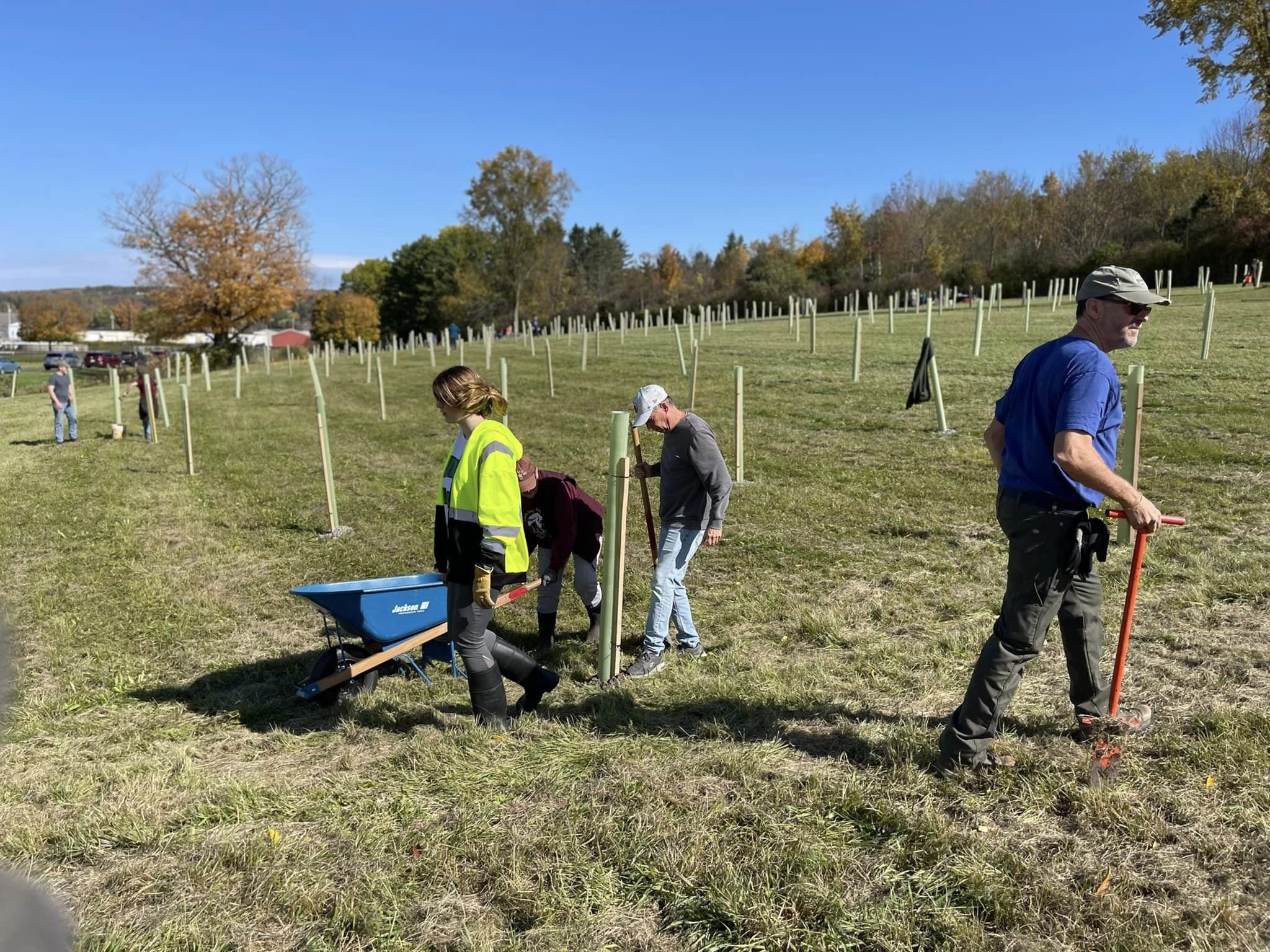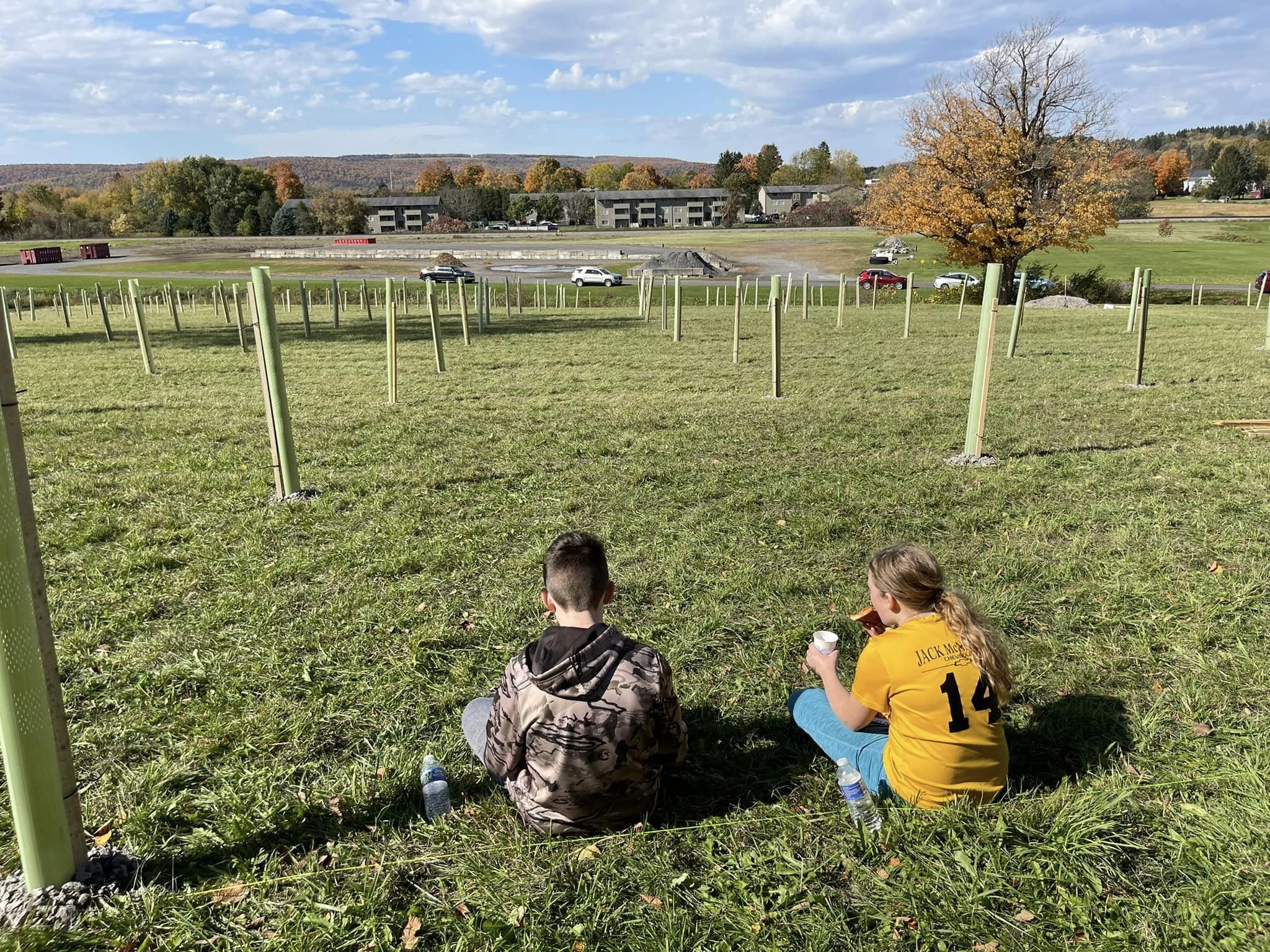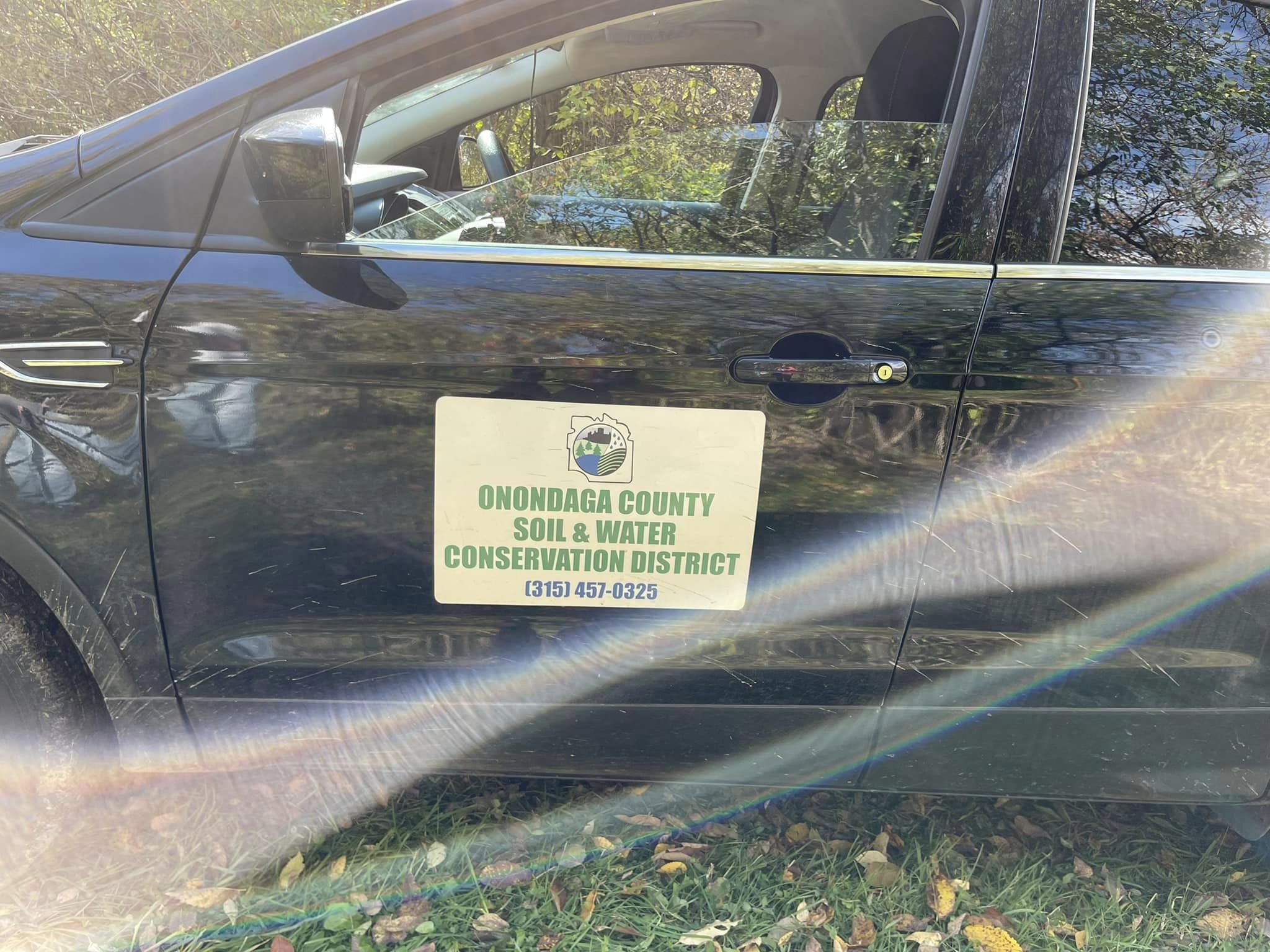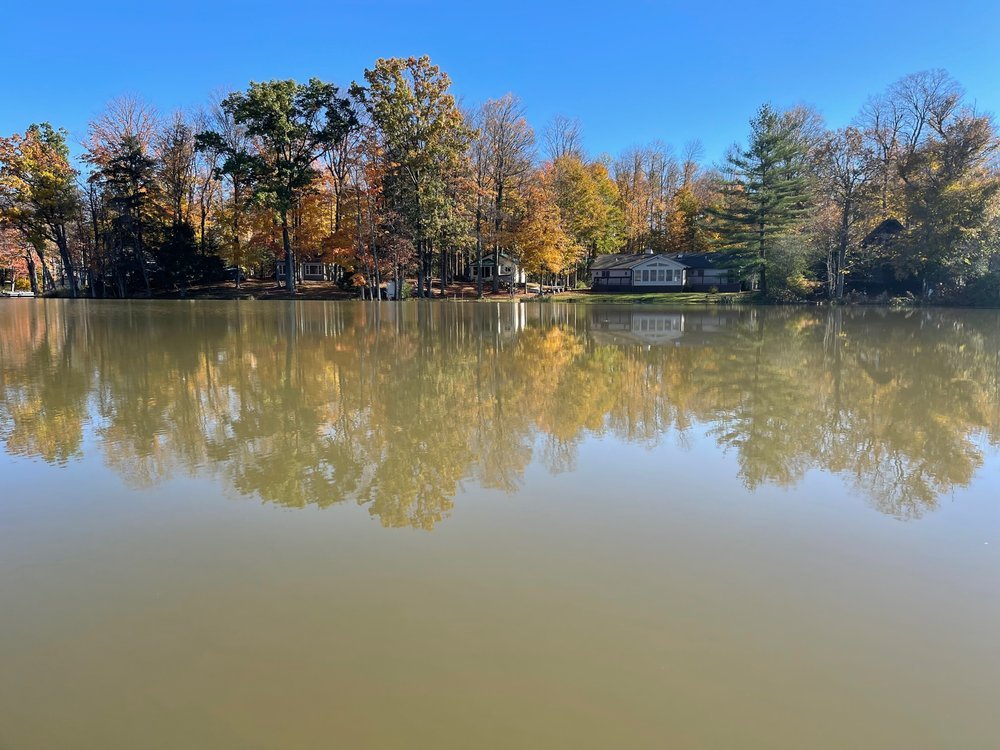On October 30, 2024, we installed the “Preserve and Protect, Our Kettle Lakes Watersheds,” sign on Lake Road, Tully NY, just before the entrance to Tully Green Lakes Beach. It draws attention that we all must be stewards of these precious resources. Pictured are members of the committee who worked with Paul Grillo, a former Song Lake resident, who designed this beautiful sign. We are grateful to our local donors, Town of Tully and Syracuse Signage Systems.
“These resources were developed to support our Kettle Lakes residents and guests when significant storm events occur which result in runoff and flooding of our properties and waterways. Our Kettle Lakes Storm Response Plan provides residents and lake users with invaluable information. Get your copy of the plan by clicking on the button below.”
What do I do if I am being impacted by storm runoff?
What do I do if I am being impacted by storm runoff?
What are we doing to provide support to our Kettle Lakes community in the event of significant storm runoff events?
We will provide a central clearinghouse for information on storm event response, and recovery.
-
The principal objective of this storm response plan is to provide a rapid and coordinated response to large-scale storm events to ensure the health and safety of residents in our Kettle Lakes community.
We all want to preserve and protect homeowner’s property from storm runoff induced flood damage as well as the water quality of our Kettle Lakes.
What is storm water runoff?
Whenever it rains, water from roofs, roads, and fields carry sediments, oil, pesticides, bacteria, fertilizer, and all manner of untreated pollutants into our waterways.
For our small lakes, the impact can be severe since we depend on septic systems and drinking water wells, while being surrounded by agricultural fields and highways. Some of these concerns can cause short-term damage to property and neighborhoods, such as road washouts, erosion and damage to landscaping and recreation, causing financial hardships.
Bacteria from aging septic systems can result in drinking well contamination requiring testing and remediation. More problematically, these storms can result in long term negative impacts to the lakes by increasing the available nutrients for excessive plant growth and algae or by allowing the introduction of AIS.
-
The principal objective of this storm response plan is to provide a rapid and coordinated response to large-scale storm events to ensure the health and safety of residents of our Kettle Lakes community.
Corollary objectives include the preservation and protection of homeowner property from flood induced damage as well as the water quality of our Kettle Lakes.
Click here to get the “Kettle Lakes Storm Response Plan” guide. This was developed to provide a multitude of resources to our Kettle Lakes community. Print a copy to have on hand in the event you lose power in a storm event.
-
FOR LIFE THREATENING EMERGENCIES CALL 911
-Click here for important Kettle Lakes Storm Response Team frequently asked questions (FAQs) which answer many questions you might have in this type of storm induced emergency.
Click here for the Link to the National Weather Service real-time report for the Kettle Lakes area. Scroll down to see what the HAZARDOUS WEATHER CONDITIONS ARE, and if there any ACTIVE ALERTS in our area.
***Emergency Resources and Phone Numbers***
Onondaga County Department of Emergency Management
Cortland County Emergency Management
New York State Citizen Preparedness Corps
Onondaga County Sheriff’s Office
Cortland County Sheriff’s Office
Onondaga County Health Department Environmental Health
Cortland County Health Department Environmental Health Topics A-Z (Check out the F-FLOOD TOPICS)
American Red Cross, Emergency Preparedness Resources
Central & Northern New York | Eastern NY | American Red Cross
Power Outage Map | National Grid (nationalgridus.com) *Updated every five minutes
Call National Grid Power Company
(800) 642-427
Call National Grid to Report an Outage 1-800-867-5222 or
Report an Outage Online at Report/Check an Outage.
OUR MISSION is to support our neighbors in our five kettle lake communities (Tully, Crooked, Song, Tully Green and Little York Lakes) as they address the challenges from the growing number of significant storm events that result in runoff and flooding.
Our focus is on prevention, mitigation, and immediate response
In 2021, two rainstorms caused severe flooding in the Kettle Lakes community of Central New York. The storms brought record level rainfall amounts, causing damage to property, road washouts, impaired lake water and drinking water quality, damage to septic systems and other serious water contamination issues. Some residents are still dealing with flooding. The Kettle Lakes Storm Response Team is a collaboration among the four Kettle Lakes to assist our communities in being more informed and prepared.
How are we working to prevent significant storm runoff which could damage our kettle lakes?
We model and encourage planting trees and vegetative buffers as lake friendly solutions.




Tully Community Tree Planting to Create a Storm Run-Off Buffer for the Tully Waste Treatment Plant
On October 15, 2022, more than 60 members of the community, young, old(er) and in-between, gathered with Onondaga Soil and Water Conservation District and the Tully Kettle Lakes folks to plant 600 saplings on the 3 1/4-acre hill that adjoins the tributary that empties into the south end of Tully Lake.
In August of 2021 more than 8” of rain fell over 24 hours, flooding the area and nearly breaching the waste treatment facility and placing Tully into a state of emergency. It is our hope that precipitation interception by mature trees will help diminish storm water runoff in the future.
How are we developing capacity and expanding knowledge of our residents and guests to our Kettle Lakes Community?
We offer opportunities to educate our community members about the issues and solutions that good lake stewards need to protect our water resources.
NYSFOLA CONFERENCE 2022 More than 80 attendees joined us… on a perfect day at Little York Pavilion to explore collaborative solutions aimed at improving our watersheds, reducing storm run-off, and lake water quality. See Program below. Go to our Kettle Lakes website (Kettle Lakes Association) for the PowerPoints from each of our very well regarded, skillful, presenters.
We will build capacity to monitor our lake water quality before and after large storm events which result in flooding
Climate change and storm run-off in the Kettle Lakes area…
In 2021, two rainstorms caused severe flooding in the Kettle Lakes community. The storms brought a record level rainfall causing damage to property, road washouts, impaired lake water quality and other serious water contamination issues, including drinking water wells. Some residents are still dealing with very high water levels.
Our weather patterns are changing, and we must be prepared for intense storms, such as these, in the future. We distributed a survey to gather data regarding the impact these storms had on our Kettle Lake residents. 84 folks shared that their damage ranged from minor landscaping damage to contaminated drinking wells, damaged docks and watercraft and loss of services to their homes for several days.
Hoffman Road, on Tully Lake was submerged for nearly a week. Photo Credit, Colleen Zawadzki
Our Kettle Lakes Watersheds straddle the south end of the Great Lakes Basin and the Upper Susquehanna watershed. Kettle lakes are unique areas, formed by glacial retreat and large chunks of ice deposited and partially buried in the landscape.
Because of their geologic history, many kettle lakes do not have natural outlets, making them uniquely susceptible to accumulation of pollution and nutrients transported from their watersheds.
The Kettle Lakes Watershed represents a 19,000+ acre area in northern Cortland County and southern Onondaga County and is also known as the Tully Lakes area due to the nearby Town of Tully.
While kettle lakes are present throughout the Upper Susquehanna River watershed, this region includes a high quantity of kettle lakes including several large lakes positioned in a compact area. The lakes are sought after for aesthetic and recreational purposes, and many have highly developed shorelines for relatively small bodies of water, resulting in elevated water quality concerns. Watershed groups for many of the larger lakes including the greater Cortland-Onondaga Federation of Kettle Lake Associations have been hard at work seeking to better understand water quality issues and their causes.
It is said that water from Crooked Lake flows northward, exiting through the St. Lawrence River, and water south continues to empty into the Chesapeake Bay. The Great Lakes–St. Lawrence River basin is an incredible asset of state, national and international significance.
Kettle Lakes Map credit, Upper Susquehanna Coalition
PLANT TREES AND SHRUBS
PLANT TREES AND SHRUBS
PLANTING TREES AND SHRUBS ARE A BEAUTIFUL WAY TO REDUCE STORM RUN-OFF WHILE BEAUTIFYING OUR KETTLE LAKES COMMUNITIES. 25 folks picked up three free trees/shrubs to plant. More than 75 remaining plants were used to replenish shoreline buffers along our kettle lakes. Thank you, UPPER SUSQUEHANNA COALITION, for supporting our Kettle Lakes.
“Our weather patterns are changing, and we must be prepared for intense storms, such as these, in the future.”














